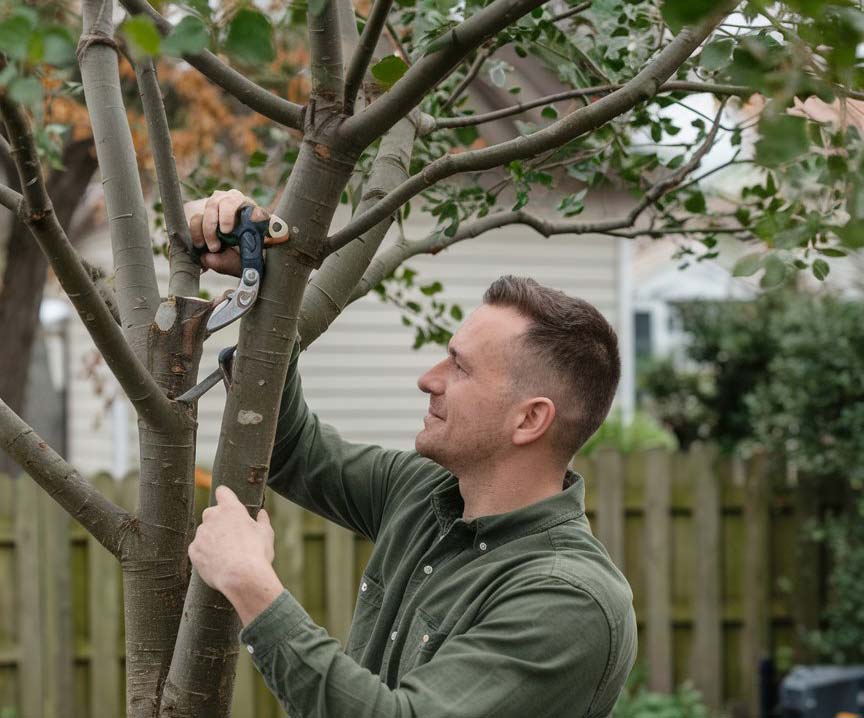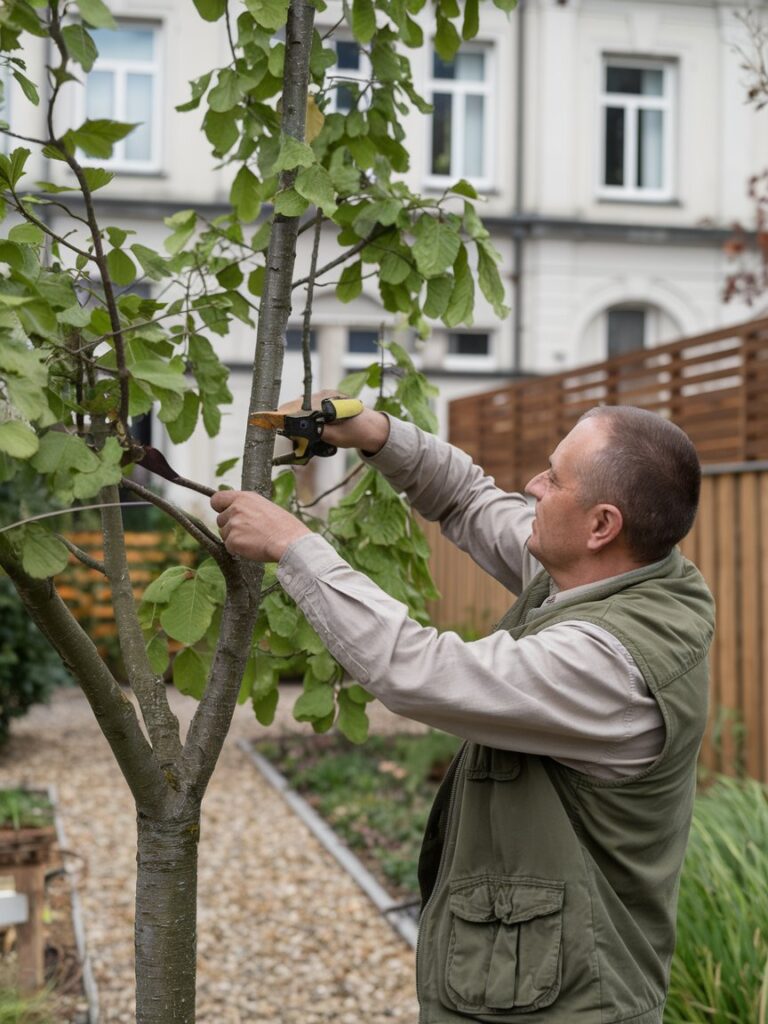Tree pruning is a vital part of tree care that helps maintain tree health and longevity. By removing dead branches and shaping tree growth, pruning allows trees to flourish in your yard or garden. Let’s dive deeper into why tree pruning is so important and how it benefits the overall health of your trees.
What is Tree Pruning?
Tree pruning refers to the selective removal of branches and parts of the tree to encourage healthy growth. Unlike tree trimming, which focuses mainly on aesthetic maintenance, tree pruning is about promoting tree health and preventing issues like disease, overgrowth, or decay.
There are several common tree pruning techniques used by arborists and homeowners alike. These include crown thinning, deadwooding (removing dead branches), and crown reduction. Each method serves a different purpose but ultimately contributes to the tree’s overall well-being.
The Importance of Tree Pruning for Tree Health
Pruning plays a crucial role in maintaining the health of trees. One of the main reasons to prune is to remove dead or diseased branches. These branches can sap energy from the tree and create openings for infections or pests to invade. Removing them allows the tree to focus its energy on healthy growth.
Additionally, pruning helps improve air circulation and sunlight penetration through the canopy. This is essential for preventing mold, fungi, and other diseases that thrive in dark, damp environments. Trees with more airflow and light exposure are generally healthier and more resistant to diseases.
Tree pruning also promotes strong, balanced growth. By selectively removing branches, you encourage the tree to grow in a more structured way, preventing issues like limb breakage or overgrowth in the future. Well-pruned trees are not only healthier but safer, too.
Pruning Techniques: How to Prune Properly
When it comes to pruning, timing and technique are key. Pruning at the wrong time or cutting branches incorrectly can harm the tree rather than help it.
The best time to prune most trees is during the dormant season, typically late winter or early spring, before new growth begins. During this time, trees are less likely to be stressed, and wounds from pruning heal faster.
There are a few essential pruning techniques you should know about:
- Crown thinning involves selectively removing branches from the crown to increase light and air penetration.
- Crown reduction is the practice of cutting back the overall size of the tree, which helps prevent limbs from becoming too heavy.
- Deadwooding focuses on removing dead or dying branches to prevent disease.
You can prune trees yourself if you’re comfortable with the tools and process. However, if you’re dealing with large trees or complicated pruning jobs, it’s often best to hire a certified arborist to handle it safely and effectively.
Benefits of Tree Pruning Beyond Health
While tree pruning is primarily for health, it also offers aesthetic and practical benefits. A well-pruned tree looks better and can greatly enhance the appearance of your yard or garden. Shaping a tree’s growth also improves its structure, making it more visually appealing.
Pruning can also improve fruit and flower production. Fruit-bearing trees, in particular, benefit from regular pruning, as it encourages more robust flowering and fruit production. This makes pruning essential for both health and aesthetics.
Another major benefit is that tree pruning increases a tree’s lifespan. By removing unhealthy or broken branches, you’re preventing long-term damage and decay that can shorten a tree’s life.
Tree Pruning for Safety: Protecting Property and People
Tree pruning also plays a significant role in safety. Dead or weak branches can fall unexpectedly, especially during storms or windy conditions, posing a risk to property and people. Regular pruning reduces this risk by removing dangerous branches before they can become a hazard.
Trees that grow near power lines or homes also need frequent pruning. Overhanging branches can cause damage to roofs or electrical wiring, which can be costly and dangerous. Pruning helps ensure that trees don’t interfere with important infrastructure.
In public spaces, trees need to be pruned to improve visibility and safety. Trees that obstruct road signs or block pathways can be hazardous, and regular pruning helps keep these areas safe and accessible.
Pruning to Prevent Tree Diseases and Pests
Pruning is one of the most effective ways to prevent the spread of tree diseases. Fungi, bacteria, and other pathogens often enter through damaged or dead branches. By removing these problem areas, you reduce the chances of diseases taking hold.
Many tree pests, such as insects and rodents, are attracted to weakened or damaged trees. Regular pruning strengthens trees, making them less susceptible to infestations. Pruning also removes areas where pests can hide or breed, further protecting the tree.
In addition, trees with better airflow and sunlight are less likely to develop fungal infections. Fungi thrive in damp, dark environments, so pruning improves the tree’s overall resilience against these threats.
How Regular Pruning Ensures Long-Term Tree Care
Regular tree pruning is essential for long-term care. Consistent maintenance allows you to monitor the tree’s health and catch potential problems early, whether it’s the beginning stages of disease or structural issues.
Healthy trees contribute to plant health across your entire landscape. By pruning regularly, you ensure that your trees remain strong, vibrant, and a vital part of your outdoor environment for years to come. This simple maintenance task can make a world of difference in ensuring the long-term health of your trees.
In the end, tree pruning not only enhances the beauty of your garden but also plays a pivotal role in protecting and maintaining tree health. By making pruning part of your regular tree care routine, you’re setting your trees up for success.
Tree pruning is vital for keeping your trees healthy and strong. Whether you’re trimming away dead branches or promoting new growth, regular pruning will help your trees thrive. Make sure to prioritize this essential tree care task to maintain the health, safety, and beauty of your trees.


